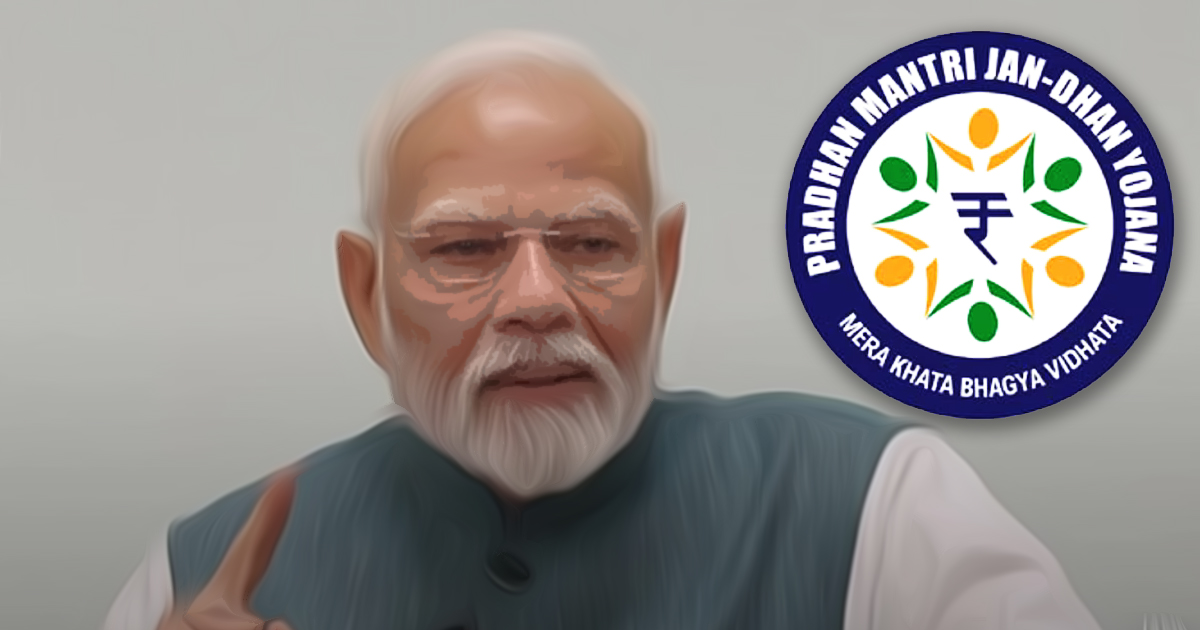
Context: The Pradhan Mantri Jan Dhan Yojana (PMJDY), a major national initiative for financial inclusion, was launched on August 28, 2014, and recently marked its 10th anniversary.
- Notable Achievement: PMJDY holds a Guinness World Record for opening 1.8 crore bank accounts within the first week of its launch.
Overview of the PMJDY:
- Goal: The primary objective of the scheme is to achieve financial inclusion by providing Basic Savings Bank Accounts (BSBAs) to individuals who were previously unbanked.
- Implementation Phases: The initiative was rolled out in two phases, targeting the provision of banking facilities to approximately 7.5 crore unbanked households using the JAM trinity—Jan Dhan (bank accounts), Aadhaar (identity), and Mobile (digital connectivity).
- Current Goals (2024-25): The program aims to open over 3 crore additional accounts by 2025.
- State-wise Distribution: Uttar Pradesh has the highest number of accounts (9.45 crore), followed by Bihar (6 crore). Lakshadweep has the fewest accounts, totaling 9,256.
- Distribution by Bank Type: Public Sector Banks are leading with 41.42 crore accounts, followed by Regional Rural Banks with 9.89 crore accounts, private sector banks with 1.64 crore accounts, and Rural Cooperative Banks with 0.19 crore accounts.
Key Features of PMJDY:
- Cost Efficiency: There are no charges for opening or maintaining accounts, and there is no minimum balance requirement.
- RuPay Debit Card: Account holders receive a RuPay debit card, which includes accident insurance coverage of up to ₹2 lakh and an overdraft facility of up to ₹10,000.
- Integration with Other Programs: The accounts under PMJDY are eligible for various schemes, such as Direct Benefit Transfers (DBT), Pradhan Mantri Jeevan Jyoti Bima Yojana (PMJJBY), Pradhan Mantri Suraksha Bima Yojana (PMSBY), Atal Pension Yojana (APY), and the MUDRA scheme.
Impacts of PMJDY:
- Boost to Financial Inclusion: Since the scheme’s inception, more than 53 crore accounts have been opened, raising the percentage of adults with formal financial accounts from 53% in 2014 to over 80%.
- Reduction in Gender Disparity: Women hold 55.6% of the accounts, amounting to 29.56 crore.
- Expansion of Banking Infrastructure: There has been a 46% increase in the number of bank branches and a 30% increase in the number of ATMs since 2014.
- Growth in Digital Transactions: By July 2024, the Unified Payments Interface (UPI) had facilitated 55.7 billion transactions.
- Reduction of Leakages: The implementation of the JAM Trinity has resulted in savings of Rs 3.48 lakh crore by eliminating ineligible beneficiaries and reducing leakage.
- Behavioral Shifts: There has been a correlation between increased usage of PMJDY accounts and reduced consumption of alcohol and tobacco, along with a decrease in thefts in states such as Uttar Pradesh, Maharashtra, and Haryana.
- Empowerment of Marginalized Groups: PMJDY has bolstered financial security and independence, particularly for marginalized communities, with 66.6% of the accounts being held in rural and semi-urban areas.
- Growth in Banking Habits: The total deposits under PMJDY reached Rs 2.31 lakh crore, with 36.14 crore RuPay debit cards issued. The average balance per account increased from Rs 1,065 in 2015 to Rs 4,352 in 2024.
- Access to Banking Facilities: Banking facilities are available within a 5-kilometer radius for 99.95% of inhabited villages.
- Social Advantages: The PMJDY has facilitated direct benefit transfers (DBTs), amounting to Rs 38.49 lakh crore over the past decade, and has been instrumental in delivering COVID-19 financial assistance and PM-KISAN benefits.
Challenges and Limitations:
- Inactive Accounts: Despite the large number of accounts opened, about 20% of them remain inactive.
- Concerns About Over-Indebtedness: The push for financial inclusion has raised concerns about the potential risk of over-indebtedness among account holders.
- Lack of Financial Literacy: Many account holders, particularly those in rural areas, lack adequate financial literacy to make full use of the banking services available to them.
- Low Transaction Activity: Some accounts show minimal transaction activity, indicating that they are not being effectively utilized.
- Access Challenges: Despite the progress, some areas still face difficulties in accessing banking facilities due to infrastructure constraints.
- Consumer Protection Gaps: The rapid growth of digital financial services has outpaced the development of consumer protection measures, making some users vulnerable to fraud and exploitation.
- Limited Involvement of Private Banks: The initiative has primarily been driven by public sector banks, with limited participation from private sector banks, which could impact the long-term sustainability of financial inclusion efforts.
- Lack of Tailored Financial Products: There is a need for more customer-centric financial products tailored to the needs of economically marginalized groups to enhance long-term financial security.
Way Forward:
- Strengthen the Financial Ecosystem: Encourage greater participation from private sector banks in financial inclusion through partnerships and collaborations.
- Promote Financial Literacy: Increase focus on financial education to help account holders, especially in rural areas, utilize banking services more effectively.
- Broaden Product Offerings: Expand access to micro-insurance, credit, and other financial products, while being mindful of the risk of over-indebtedness among new account holders.
- Enhance Consumer Protection: Develop a robust framework to protect users of digital financial services from fraud and exploitation.
- Design Customer-Centric Products: Create financial products that cater to the unique needs of PMJDY account holders, considering their irregular income patterns and specific financial requirements.
- Utilize Digital Technology: Continue to leverage digital tools like UPI and the Unified Lending Interface to enhance the accessibility and efficiency of banking services.
- Integrate Government Schemes: Explore further integration of PMJDY accounts with other government welfare programs to create a more comprehensive support system.
- Activate Dormant Accounts: Implement strategies to monitor and activate inactive accounts to ensure they are effectively used.




